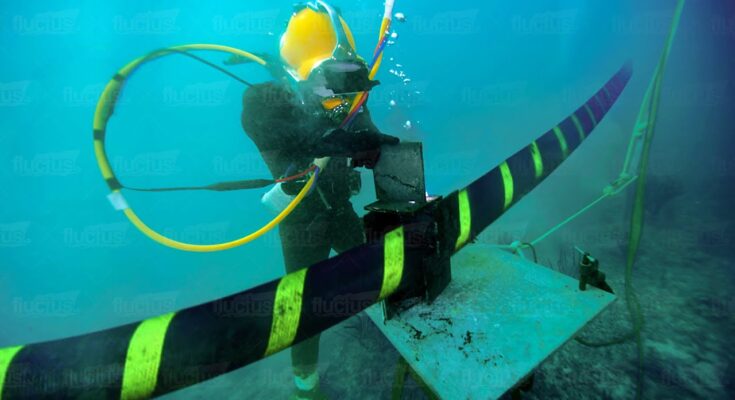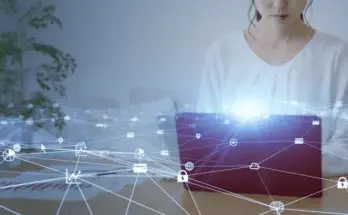The network of submarine internet cables lies underneath the oceans. These undersea cables are responsible for transmitting information and connects continents. However, these cables are susceptible to damage because of the harsh underwater environment and the constant threat of natural disasters. To cope up with these disruptive situations, a swift and efficient repair process is necessary.
Submarine internet cables
Submarine internet cables are essential components of the global telecommunications infrastructure. These specialized cables are laid on the ocean floor to facilitate flow of information and communication between different continents.
Composition of submarine internet cables
Submarine cables use fiber-optic technology to transmit data. Fiber-optic cables consist of thin strands of glass or plastic, known as optical fibers. They carry digital information in the form of light pulses. These cables are designed to withstand the harsh conditions of the underwater environment. They typically consist of multiple protective layers which include insulation, strength members and an outer protective sheath. Repeaters are also placed along the length of the cable to counteract signal degradation. To verify ptcl speed test, visit here. These cables have armored layers which provide additional protection against external threats. Armoring materials like steel wires shield the delicate optical fibers from physical damage.
Causes of Disruptions
Submarine cables face various threats that can lead to disruptions.
- Natural disasters: Earthquakes, underwater landslides and volcanic activity can damage or break cables.
- Human activities: Anchors from ships, fishing trawlers and other human activities can inadvertently damage submarine cables.
- Equipment failure: Malfunctions in repeaters, power feeding systems or other components may occur.
Techniques for repairing submarine internet cables
Let’s explore the techniques employed for repairing submarine internet cables. Also highlighting the challenges involved and the innovative solutions that keep our interconnected world afloat.
- Cable maintenance ships
One of the primary techniques for repairing submarine internet cables involves specialized vessels. They are equipped with advanced technology for cable maintenance. These ships are designed to navigate the open sea to reach cable locations. Remotely operated vehicles (ROVs) are deployed to inspect and repair the damaged sections. ROVs are crucial in conducting underwater inspections. It performs intricate repair tasks at depths that are impossible for human divers to reach. Cable maintenance ships are equipped with dynamic positioning systems. They enable them to stay in a fixed position over the cable repair site. This stability is vital for the precise operation of ROVs during cable repairs.
- ROVs and cable plows
Remotely operated vehicles (ROVs) are indispensable tools in the submarine cable repair toolkit. These robotic devices are capable of withstanding the extreme pressure and darkness of the deep ocean. ROVs are equipped with cameras, lights and mechanical arms which enables them to repair submarine cables. Cable plows are deployed in certain cases where the cable is damaged by sediment or debris accumulation. These plows are attached to ROVs. They are designed to cut and create a trench where the damaged cable can be buried securely. This technique repairs the cable and also helps prevent future damage caused by external forces.
- Pre-positioned spare cables
Some regions strategically pre-position spare cables on the ocean floor to speed up the repair process and minimize downtime. These coiled spare cables are placed in specialized containers. They can be quickly deployed to replace damaged sections. It is important to consider the potential areas of cable vulnerability and the most efficient routes for repair ships to access them.
- Fault detection with AI
Artificial Intelligence (AI) plays a significant role in detecting faults in submarine internet cables. It uses advanced algorithms, data analytics and machine learning techniques to detect the fault. Submarine cables are equipped with various sensors that monitor conditions such as temperature, pressure and signal quality. AI algorithms can analyze the data collected from these sensors to identify patterns indicative of potential faults. AI-based predictive maintenance systems continuously monitor the condition of submarine cables which gives early warnings about potential issues. AI can analyze satellite and sonar data to monitor the ocean floor and identify any disturbances or changes in the vicinity of submarine cables. This can be crucial for detecting faults caused by natural disasters or human activities. AI-powered computer vision techniques can analyze underwater images and videos obtained from remotely operated vehicles (ROVs) during cable inspections. For more information, visit: https://ptcltest.com.pk/
Challenges and Innovations
Despite the sophisticated techniques employed for repairing submarine internet cables, the challenges in maintaining these vital communication lifelines still persist.
- Depth and pressure
Working at extreme depths poses significant challenges for both humans and machines. The pressure at great ocean depths can crush conventional equipment. It is necessary to develop the specialized materials and technologies that can withstand these harsh conditions. Innovations in materials science have led to the creation of pressure-resistant cables, connectors and housings for ROVs. These innovations ensure their functionality at depths exceeding several kilometers.
- Precision in repair operations
Repairing a delicate fiber-optic cable in the pitch-black darkness of the ocean floor requires unparalleled precision. ROVs are equipped with high-resolution cameras and advanced manipulation capabilities. They allow technicians to visualize and execute intricate repair tasks. The development of haptic feedback systems enhances the operator’s ability to feel and control tools remotely. It ensures precise actions even in the absence of direct physical contact.
- Environmental impact
The deployment of cable repair ships and ROVs in the ocean raises concerns about the potential environmental impact. To address these concerns, technological advancements focus on minimizing disturbances to marine ecosystems.
Conclusion
As we navigate the depths of the ocean to mend these vital communication links, ongoing advancements ensure the resilience and interconnectedness of our world. Submarine internet cable repairing is a complex and vital process as they form the backbone of global communication. Innovations in technology, materials and environmental considerations continue to improve the efficiency and sustainability of repairing these critical undersea cables. The techniques employed, ranging from cable maintenance ships and ROVs to pre-positioned spares, showcase the adaptability and resilience of the telecommunications industry in the face of challenges.



